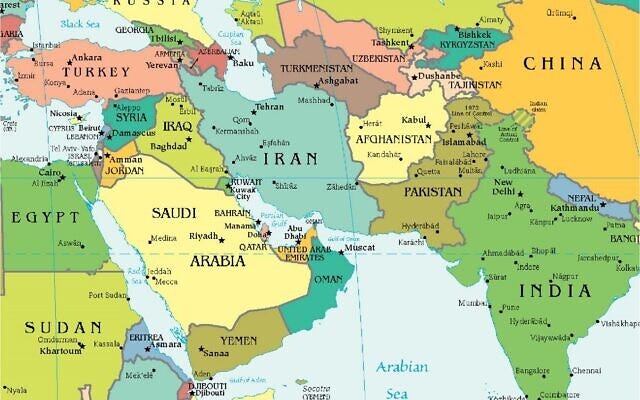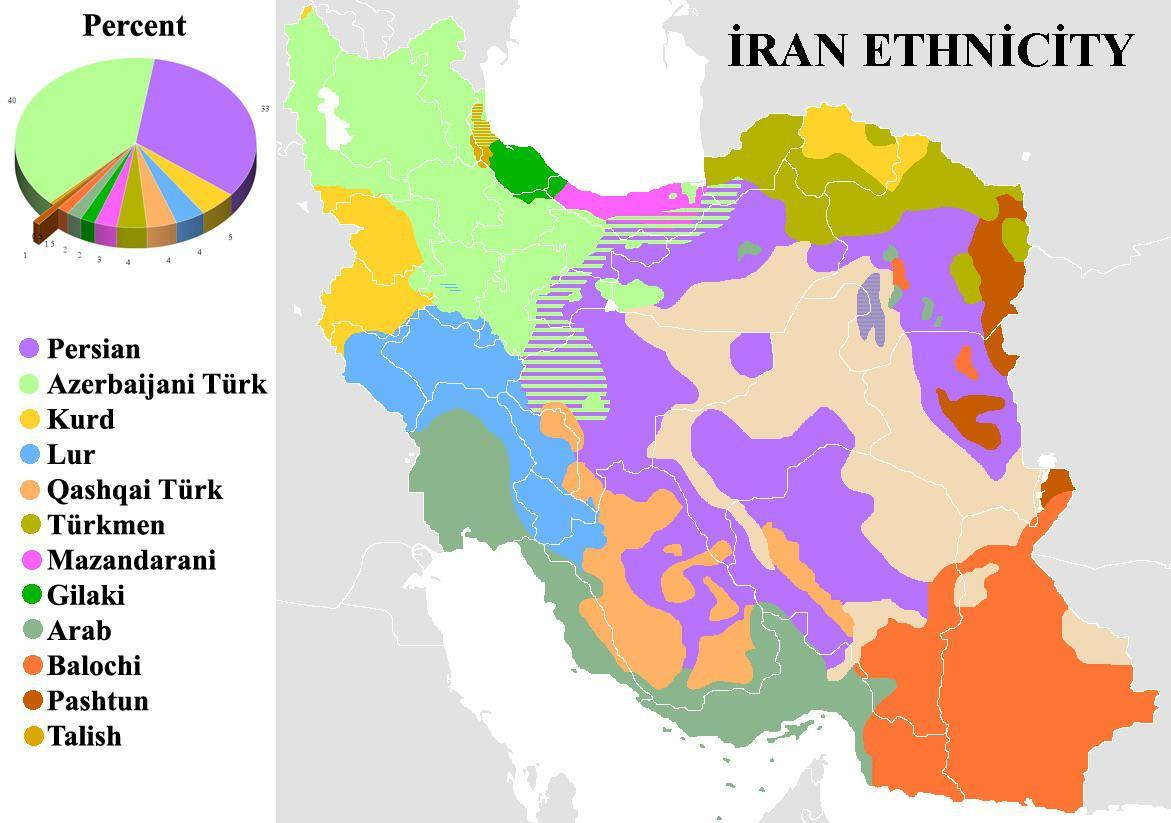The Underlying Danger of Iran's Protests
The ongoing protests in Iran sparked by the brutal murder of Mahsa Amini a 22-year-old, Kurdish woman who was detained for not wearing her hijab correctly by Iran’s Islamic religious police and then beaten to death have caught large attention in the West and around the world from feminist and human rights campaigners. In Iran protests have been raging for over three weeks with many women burning their hijabs as a sign of solidarity. Outside there have been many pronouncements about the end of the Islamic Republic and revolution. Despite how morally important these protests and the support for them is, not many people are viewing this with the sober lens that the Middle East often needs to be seen through. It may be a cynical perspective but the historical record shows that often glimmers of hope are followed by a worsening situation. There are only two outcomes that can come from this movement and that is repression by the regime or collapse of the regime and either option will be disastrous. As such this piece seeks to look at the potential outcomes of this movement and what we can take from other such movements such as the Arab Spring.
Repression
Iran has a long history of violent repression of threats to the control of the Ayatollah. The official name of the country can shed some light on this tradition. The original revolution in 1979 against Mohammad Reza Shah that would create the current Islamic theocracy was not just made up of the Islamist’s led by Ayatollah Ruhollah Khomeini but also leftists and liberals. As such in a compromise the nation would retain both elements of democracy and republicanism, but the Islamist’s would quickly assert their dominance. Both the National Democratic Front and the Muslim Peoples Republic Parties were banned, and universities were purged of dissidents.
This is a trend that has continued over the years with large protests that would occur in the wake of the 2009 general election after widespread accusations of vote rigging happened. Since then, there have been a spate of significant protests that have led up to today’s ones. These, however, have all led to a mixture of arrests and killings. Iran will usually shut down internet access and then open fire on protesters. It is clear that the regime is well aware of the threats it faces if it collapses. In 2011 at the height of the Arab Spring Qasem Soleimani would give a speech in his native Kerman to the IRGC’s Basiji Force. This is an organization of young radicals that are used by the regime to put down civil unrest. These young men idolized the Quds Force commander and as such would hang on every word. Soleimani would have this to say to them “In our region today, we have more than one Iran. Today, Egypt is Iran, whether you like it or not”. As such the security forces have been primed to make sure that regime collapse does not happen at all costs and as such if they can these protests will be brutally put down. For now, they are very high profile, but news cycles move on and once that happens, we will more than likely see the same play book being used as we have already seen killings happening in the region.
Collapse
If Syria, Libya, and Iraq have taught us anything over the last twenty years it is that sometimes the devil you know is better than the devil you don’t. If the Iranian regime falls Iran is likely to see Balkanization as well as another failed state in the region which could be disastrous. Iran is currently the bulwark between Afghanistan and Syria and Iraq (seen below). The fall of Kabul has led to vast amounts of weapons being captured by the Taliban as well as Afghanistan’s opium trade would more than likely lead to massive flows of weapons and drugs across Central Asia and the Middle East and could pose a threat to Europe through Turkey. This would also open up ratlines between ISIS K in Afghanistan and ISIS proper in Syria and Iraq. There have also been domestic threats in Iran with multiple ISIS attacks over the years and a jihadist separatist movement in the Sistan and Baluchestan province beside the Pakistan border. Groups may use this as an opportunity to push into Iran and take ground.
On a similar note, despite Iran’s recent support for the Taliban it is an uneasy alliance and as such we have seen border skirmishes happening between the Taliban and Iran. With Pashtun regions in Iran, it may be an opportunity for Taliban expansion especially if they are worried about the expansion of ISIS K.
Iran has also been tolerating Al Qaeda in recent years. In late 2020 the second in command of Al Qaeda was assassinated on the streets of Tehran by what can be assumed to be the CIA or Mossad. Abu Muhammad al-Masri was killed by two gunmen on a motorcycle along with his daughter who was married to one of Bin Laden's sons. This raises questions of whether Iran was aware of his presence in the country and was providing safe harbour. Secretary of State Mike Pompeo before leaving office alleged that Iran was becoming the “new home base” of Al Qaeda. Although embellished there is a truth in a strategic alliance that has been growing between the two since 2015. After 9/11 Iran gave refuge to many high-ranking members of Al Qaeda but with some levels of house arrest. However, they had been allowed free as of 2015 to live and operate freely if they did not pose a threat to Iran. One of these Al-Qaeda leaders was the aforementioned Abu Muhammad al-Masri. The reason why Iran tolerates Al-Qaeda is that both have a similar goal of the expulsion of the US from the Middle East. Despite the massive differences between both groups such as the rabid sectarianism of Al-Qaeda, these differences have been put aside to attack what they see as more of a threat in the “Great Satan” that is the US. This means that there are pockets of AQ operating in Iran that could also be a danger.
As well as jihadists there are ethnic groups (seen above) that will more than likely try and break away. The Kurds are the obvious case. Iran has ruthlessly suppressed its Kurdish populations over the years. The fact that Mahsa Amini was a Kurd is something that has been overlooked by most people in the West, but this makes a vital difference. We have seen Iran accusing the Iraqi Kurds of stoking these protests and as such the IRGC has been openly attacking Peshmerga positions in the Iraqi city of Erbil which is the capital of Iraqi Kurdistan. It is interesting that Iran is doing this overtly rather than using its numerous proxy forces it possesses in Iraq. The use of IRGC drones flown from Iran itself is a clear political message to the Iraqi Kurds. If Iran falls it is a given that the Iranian Kurds are going to attempt to assert their sovereignty. As we saw in Syria with the SDF and Rojava the Kurds will often work with democratic forces. As such Iranian Kurdistan would be the most obvious area to intervene and prop up if the West decides to intervene in a light-footprint operation like in Syria. More Kurdish influence will however lead the Turks to intervene as Turkey would now be the only country in the region without a regional autonomous Kurdistan. Turkey has like Iran suppressed its Kurds and sees them as an existential threat to their national security. This would lead in 2020 to Turkey annexing parts of Northern Syria to create a buffer between the SDF and Turkey.
The other ethnic group that could break off from Iran is Iran’s Azerbaijanis. There has always been a tense relationship between Iran and Azerbaijan as there are actually more Azerbaijanis in Iran than Azerbaijan itself. Azerbaijan has really asserted itself in recent years with the overwhelming victory in the 2020 Nagorno-Karabakh war between Armenia and Azerbaijan. Russia would intervene as peacekeepers at the end of the war but since they have become embroiled in Ukraine Azerbaijan has used this opportunity to drive in the knife. Turkey played a key role in backing Azerbaijan and as such they could play a significant role in backing an Azerbaijani intervention in Iran as it would be a significant counterbalance to Kurdish influence in Northern Iran.
There is also a possibility that if it comes down to a civil war that the regime stays somewhat intact á la Syria. In ordinary times there would be a discussion to be had over the potential of a Russian intervention to prop up the regime, but Russia does not have the manpower to do so as things stand with Ukraine. However, China may play a key role. Troops would more than likely not be sent as they have seemed to steer clear of this tactic in the past, but China would more than likely provide material support to the regime. Due to the US naval presence in Bahrain and Diego Garcia China strategically needs a strong Iran for it to project Naval power. As such China would have to be involved in one way or the other to forward its own interests.
Iran’s influence spreads across the Middle East and as such Iran’s collapse would have ripple effects across the region. Iran backs multiple proxy forces across the Middle East (seen below) that play roles in most of the region’s conflicts.
If Iran can no longer back these groups other actors are going to take advantage of this. Israel would more than likely make moves against both Hamas and Hezbollah, the Islamic State could see a resurgence in Iraq and Syria, and the Saudis would try and consolidate their influence against the Houthis in Yemen. As such the Middle East could see an uptick in conflicts that would lead into a vicious cycle in which the more destabilization in Iran the more destabilization, we will see in the Middle East and vice versa.
Conclusions
Unfortunately, the situation in Iran does not seem like it is going to get better any time soon both results from this protest movement and the government response to it are going to be catastrophic whatever way one slices it. It is unfortunate but as usual with geopolitics the situation is like being stuck between a rock and a hard place.





